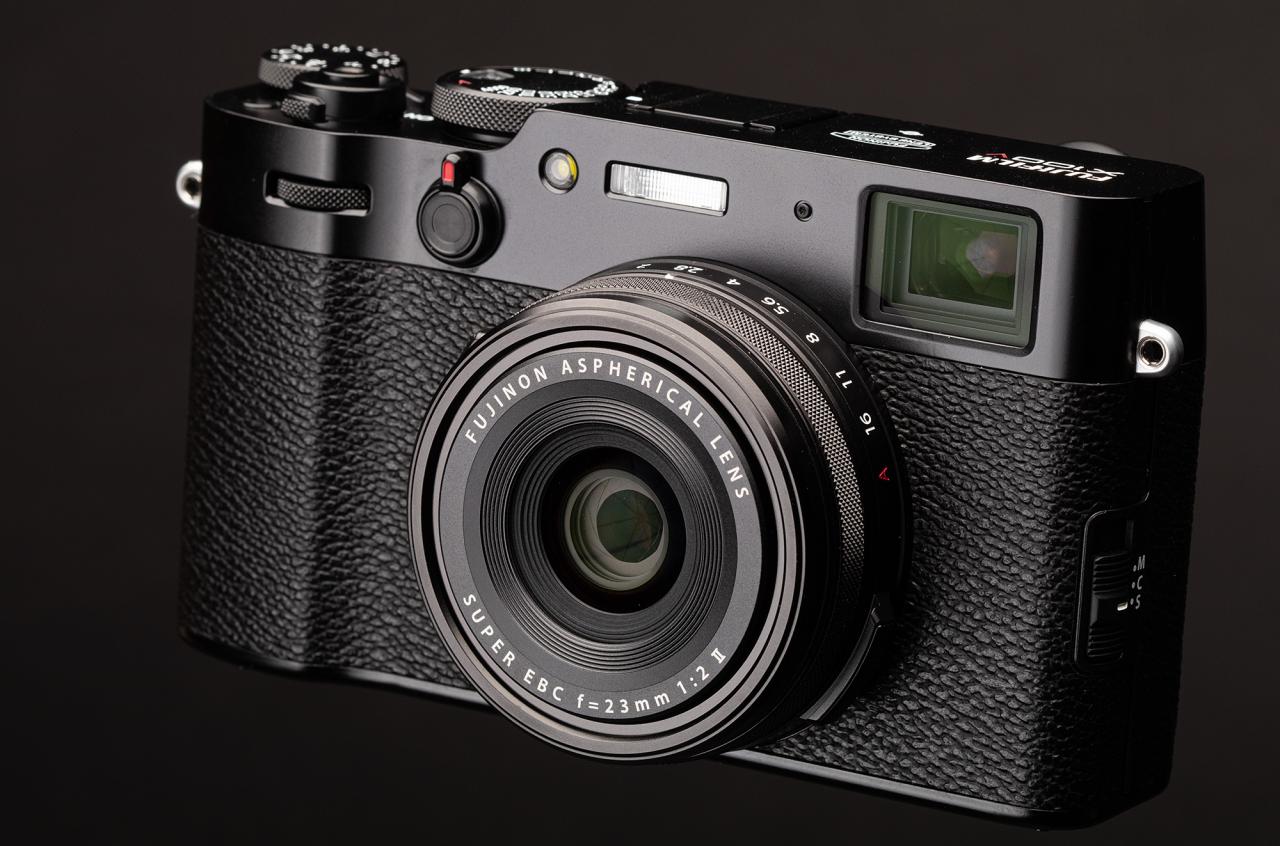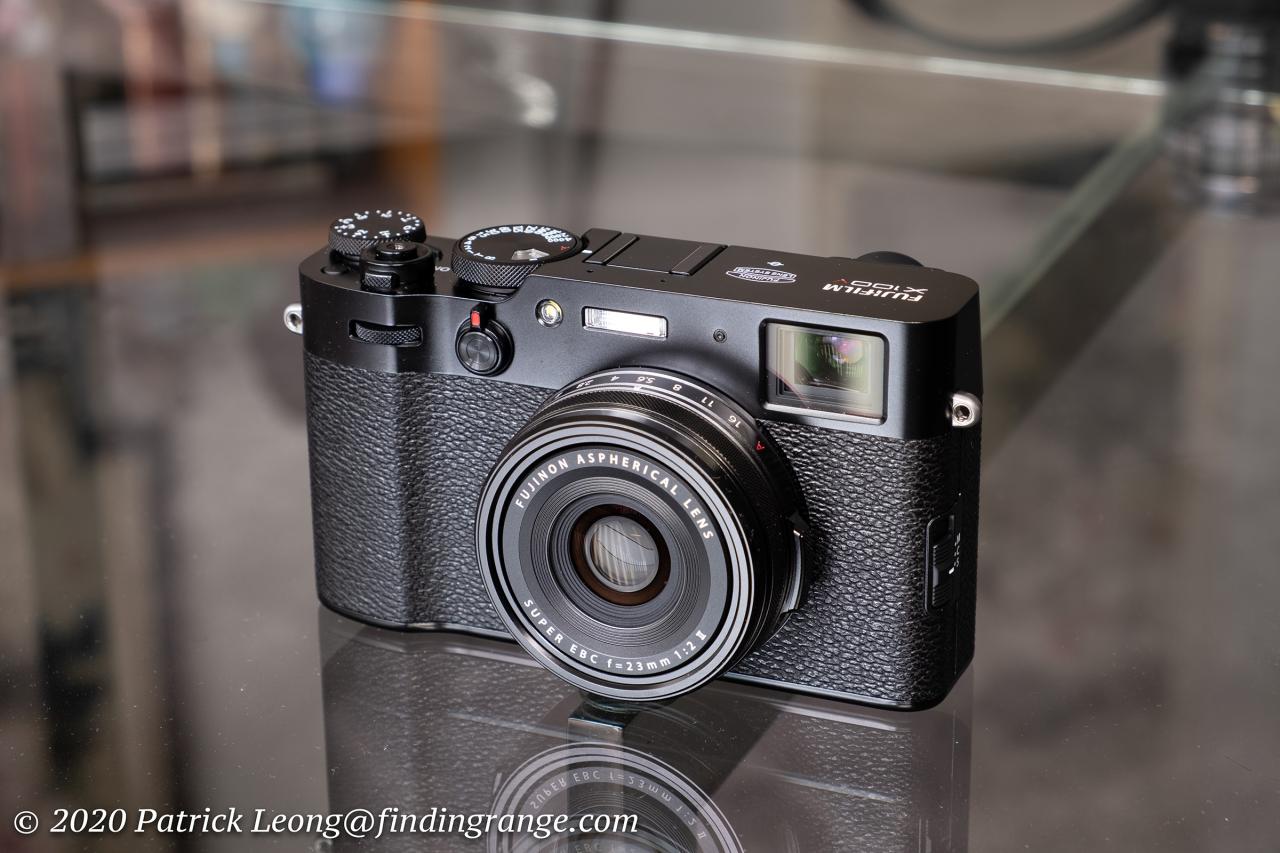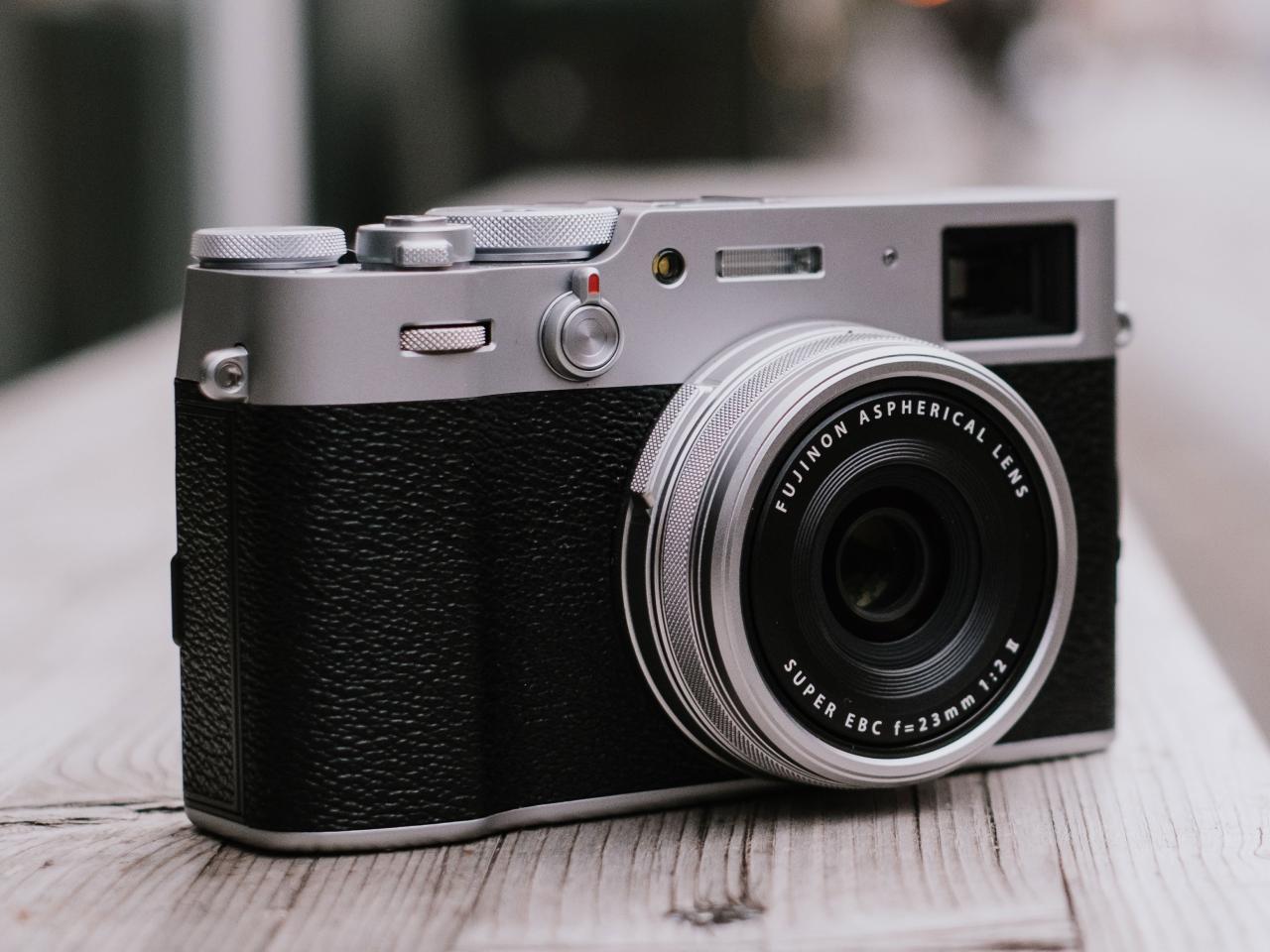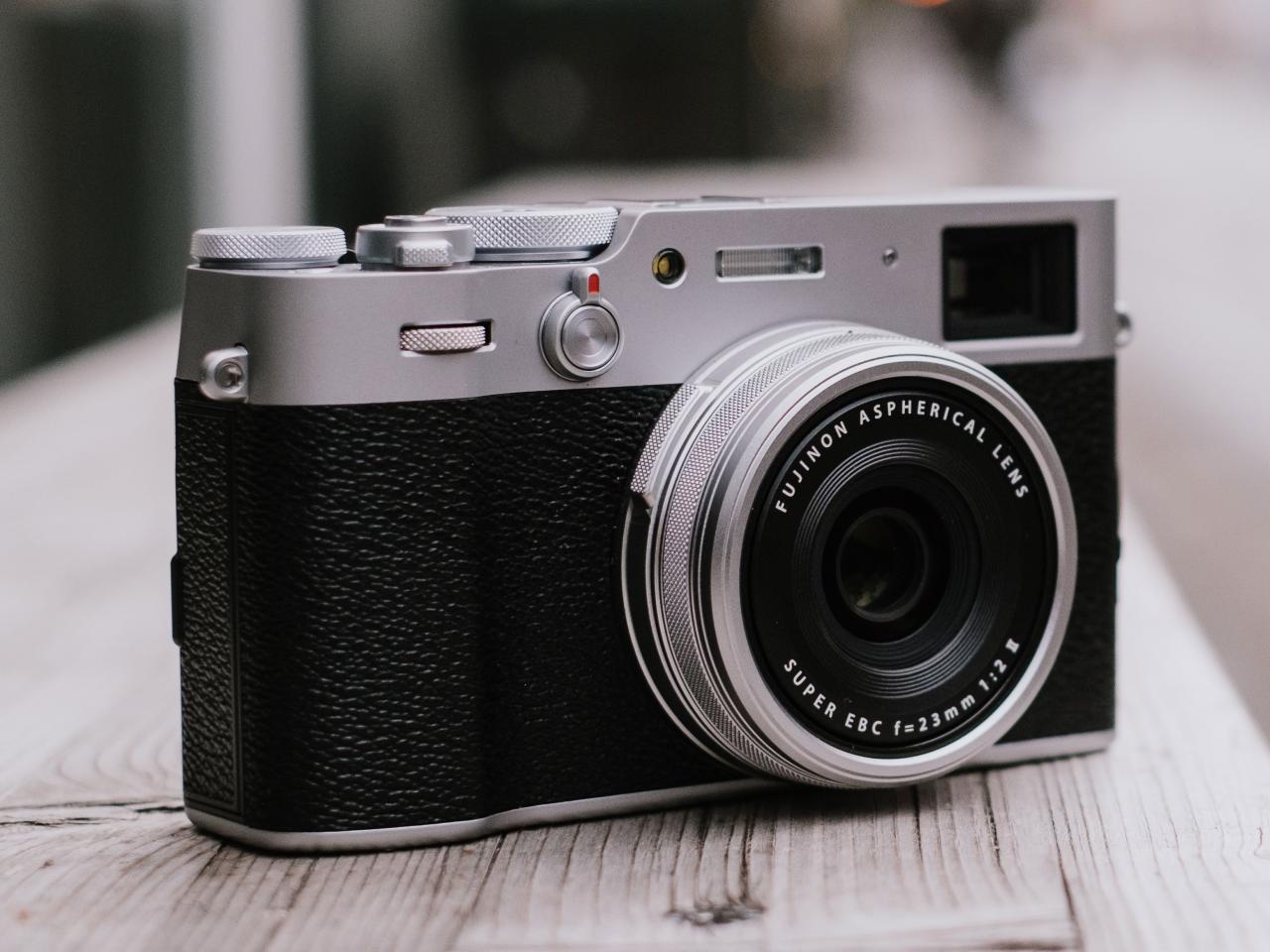The Fujifilm X100V immediately captivates with its retro-chic design and exceptional image quality. This review delves into the camera’s key features, performance, and user experience, comparing it to its predecessors and competitors in the premium compact camera market. We’ll explore its strengths and weaknesses, examining its image quality across various photographic scenarios and discussing its versatile film simulations. Prepare to be impressed by this remarkable piece of photographic engineering.
From its robust build and intuitive controls to its impressive low-light performance and exceptional dynamic range, the X100V offers a compelling blend of classic aesthetics and modern technology. Its fixed lens, while seemingly limiting, actually proves to be a significant strength, encouraging photographers to focus on composition and creativity rather than equipment swapping. This in-depth analysis will equip you with the knowledge needed to determine if the Fujifilm X100V is the right camera for you.
Fujifilm X100V: A Deep Dive into the Premium Compact
The Fujifilm X100V has solidified its position as a leading premium compact camera, captivating photographers with its blend of retro aesthetics, exceptional image quality, and intuitive user experience. This in-depth review delves into the camera’s key features, performance, and overall usability, comparing it to its predecessors and competitors to provide a comprehensive understanding of its strengths and weaknesses.
Fujifilm X100V Camera Overview

The Fujifilm X100V boasts a 26.1MP X-Trans CMOS 4 sensor paired with the X-Processor 4, delivering impressive image quality and speed. Its fixed 23mm f/2 lens (35mm equivalent) provides a versatile focal length ideal for street photography, landscapes, and portraits. The fixed lens design, while limiting focal range flexibility, contributes to the camera’s compact size and exceptional image sharpness.
Compared to other cameras in its price range, such as the Sony RX1R II and Ricoh GR III, the X100V stands out with its unique film simulations, retro design, and excellent image quality, particularly in its handling of dynamic range and low-light performance.
| Model | Sensor Size | Lens | Key Features |
|---|---|---|---|
| X100 | 16.3MP APS-C X-Trans CMOS I | 23mm f/2 | Original X-Trans sensor, classic design |
| X100T | 16.3MP APS-C X-Trans CMOS II | 23mm f/2 | Improved autofocus, refined design |
| X100F | 24.3MP APS-C X-Trans CMOS III | 23mm f/2 | Higher resolution, improved AF system |
| X100V | 26.1MP APS-C X-Trans CMOS 4 | 23mm f/2 | Higher resolution, improved AF, tilting screen |
Image Quality and Performance

The X100V’s X-Trans CMOS 4 sensor and X-Processor 4 engine combine to produce exceptional dynamic range, allowing for detailed highlights and shadows. Low-light performance is significantly improved over previous models, with minimal noise even at high ISO settings. The camera excels in various photographic scenarios, including street photography, landscapes, and portraits. Its hybrid autofocus system, incorporating phase-detection and contrast-detection, is generally quick and accurate, though it can sometimes struggle in low-light or with fast-moving subjects.
| Image Scenario | Optimal Settings |
|---|---|
| Landscape | Aperture priority (Av) mode, f/8-f/11, low ISO, tripod recommended |
| Portrait | Aperture priority (Av) mode, f/2-f/2.8, ISO Auto, focus on eyes |
| Street Photography | Shutter priority (Tv) mode, fast shutter speed (1/250s or faster), ISO Auto, continuous shooting mode |
User Experience and Ergonomics
The X100V maintains the series’ classic retro design, featuring a robust magnesium alloy body and a satisfyingly tactile control layout. The menu system, while initially appearing complex, becomes intuitive with use. Compared to other compact cameras, the X100V offers a more engaging and hands-on shooting experience. The retro design, while aesthetically pleasing to many, might not appeal to users seeking a more modern look.
However, its physical controls offer a level of direct control often absent in touchscreen-only interfaces.
- Improved autofocus system
- Tilting touchscreen LCD
- More refined ergonomics
- Enhanced menu navigation
- Improved battery life
Film Simulations and Creative Control
The X100V offers a wide array of film simulations, emulating the look and feel of classic Fujifilm films. These simulations provide a creative shortcut, allowing photographers to achieve specific aesthetic effects without extensive post-processing. Each simulation offers a unique combination of color, contrast, grain, and sharpness, impacting the overall mood and feel of the image. For example, Classic Chrome offers muted tones and subtle saturation, ideal for landscape photography, while Acros provides high sharpness and fine grain, perfect for black and white street photography.
The Fujifilm X100V, with its exceptional image quality, is perfect for capturing everyday moments. However, even the best camera can’t always prevent unforeseen events, like the recent spate of drone crashes in New Jersey , reminding us of the importance of responsible technology use. Returning to the X100V, its compact size makes it ideal for discreet street photography, capturing those unplanned, spontaneous shots.
| Film Simulation | Contrast | Saturation | Grain |
|---|---|---|---|
| Classic Chrome | Medium | Low | Low |
| Acros | High | Low | Fine |
| Provia | Medium | Medium | Low |
| Velvia | High | High | Low |
| Astia | Low | Medium | Low |
Accessories and Expandability
A range of accessories enhances the X100V’s functionality. External lenses, while not directly compatible without adapters, are not typically used due to the fixed lens design. External flash units can be beneficial for fill-flash in challenging lighting situations. The camera offers Wi-Fi and USB connectivity for image transfer and remote shooting.
The Fujifilm X100V’s compact size makes it ideal for street photography, capturing candid moments with its exceptional image quality. Its versatility extends beyond stills; imagine documenting the aerial perspective of a project like the remington drone loads , using the X100V to capture ground-level details while the drone provides the broader context. Then, seamlessly editing both sets of images for a comprehensive visual narrative.
- Additional batteries
- External flash unit
- Leather case
- Neutral density filters
Strengths and Weaknesses Compared to Competitors

The X100V excels in image quality, user experience, and its unique film simulations. However, its fixed lens and lack of in-body image stabilization are notable drawbacks compared to competitors offering interchangeable lenses and IBIS. A comparative analysis against competitors like the Sony RX1R II and Ricoh GR III reveals its strengths and areas for potential improvement.
| Feature | X100V | Sony RX1R II | Ricoh GR III |
|---|---|---|---|
| Image Quality | Excellent | Excellent | Excellent |
| Lens | Fixed 23mm f/2 | Fixed 35mm f/2 | Fixed 28mm f/2.8 |
| Autofocus | Good | Excellent | Good |
| Price | Medium-High | High | Medium |
Illustrative Examples
A breathtaking landscape photograph, captured during golden hour, showcases the X100V’s dynamic range. Using Aperture Priority mode (f/8, ISO 200), the camera captured the rich detail in both the brightly lit sky and the shadowed foreground. Post-processing involved subtle adjustments to contrast and clarity to enhance the overall impact. A striking portrait, shot with a shallow depth of field (f/2, ISO 400), highlights the camera’s ability to isolate the subject against a blurred background.
Careful attention to lighting and composition ensured a flattering and impactful image. Finally, a dynamic street photography shot, captured using a fast shutter speed (1/500s, ISO 800), demonstrates the camera’s ability to freeze motion and capture fleeting moments. Post-processing involved minor adjustments to contrast and grain to enhance the gritty feel of the street scene.
The Fujifilm X100V stands as a testament to the enduring appeal of refined design and exceptional image quality. While not without its minor drawbacks, its strengths significantly outweigh its weaknesses, making it a highly desirable camera for both seasoned professionals and aspiring photographers. Its intuitive user experience, combined with its powerful creative tools, allows for effortless image capture, fostering a creative workflow that prioritizes artistic expression.
Ultimately, the X100V is more than just a camera; it’s an experience, a statement, and a tool that empowers photographers to capture the world in their unique style.
General Inquiries: Fujifilm X100v
What is the battery life like on the Fujifilm X100V?
Battery life is generally considered adequate for a day of shooting, but carrying a spare battery is recommended, especially for extended shooting sessions.
Does the Fujifilm X100V shoot video?
Yes, it shoots 4K video at 30fps and 1080p at up to 120fps for slow-motion capabilities.
How does the X100V’s autofocus compare to mirrorless cameras?
While generally fast and accurate, it might not match the speed and subject tracking capabilities of some higher-end mirrorless systems, particularly in challenging lighting conditions or with fast-moving subjects.
Is the Fujifilm X100V weather sealed?
No, the X100V is not weather-sealed. Using it in inclement weather is not recommended.
